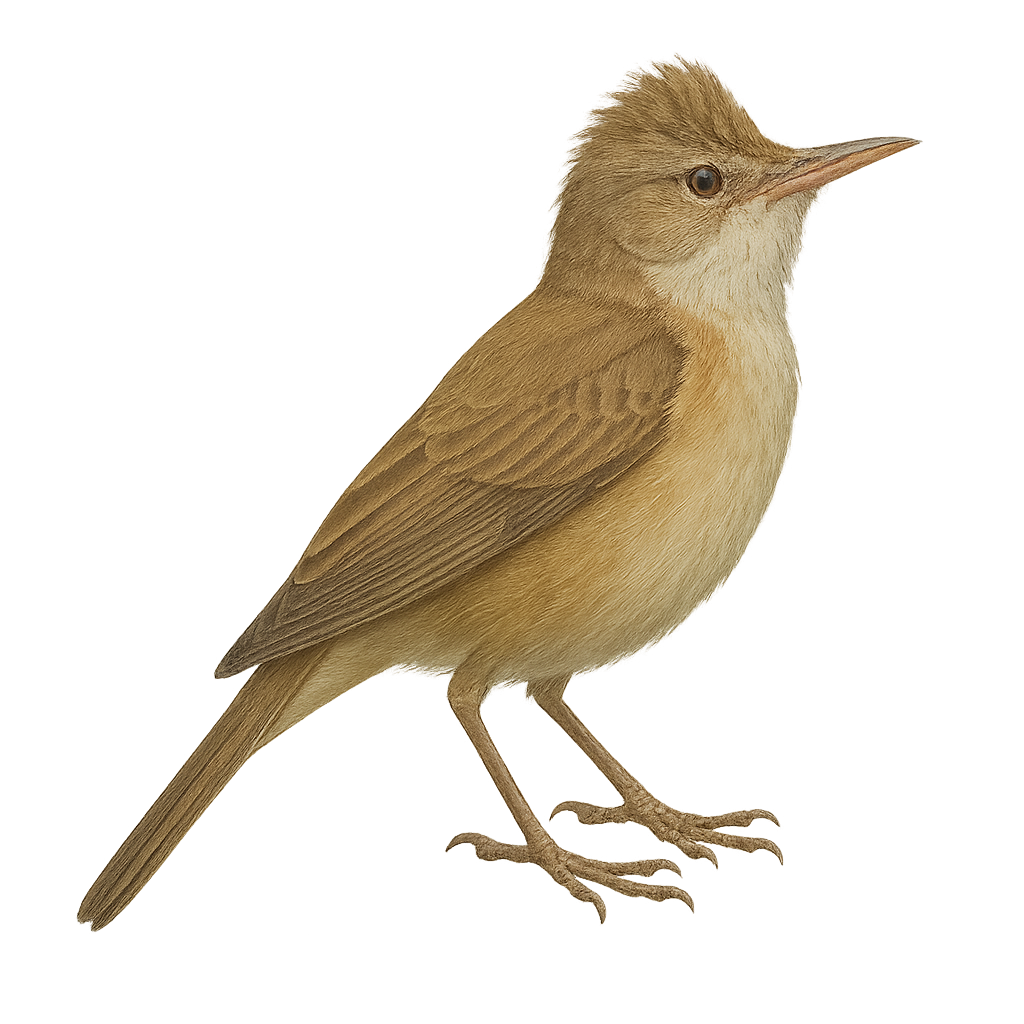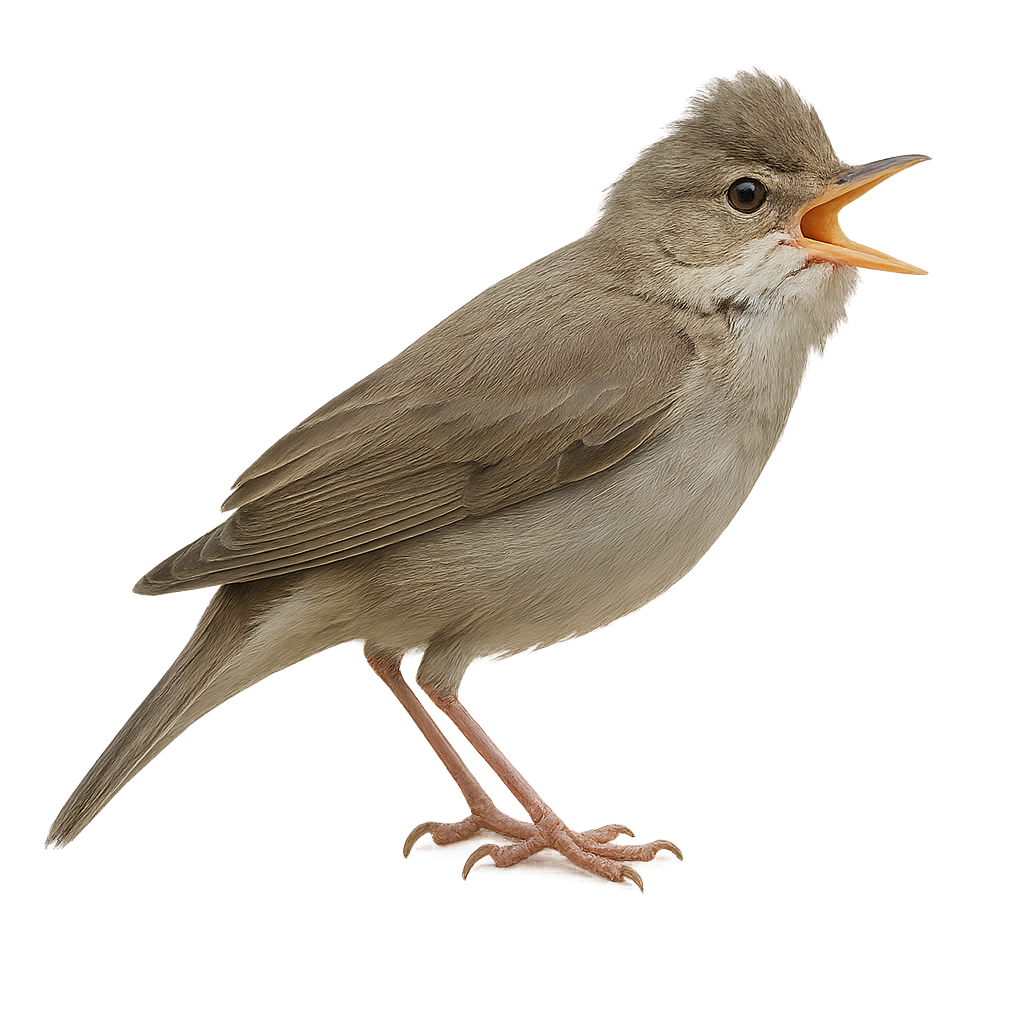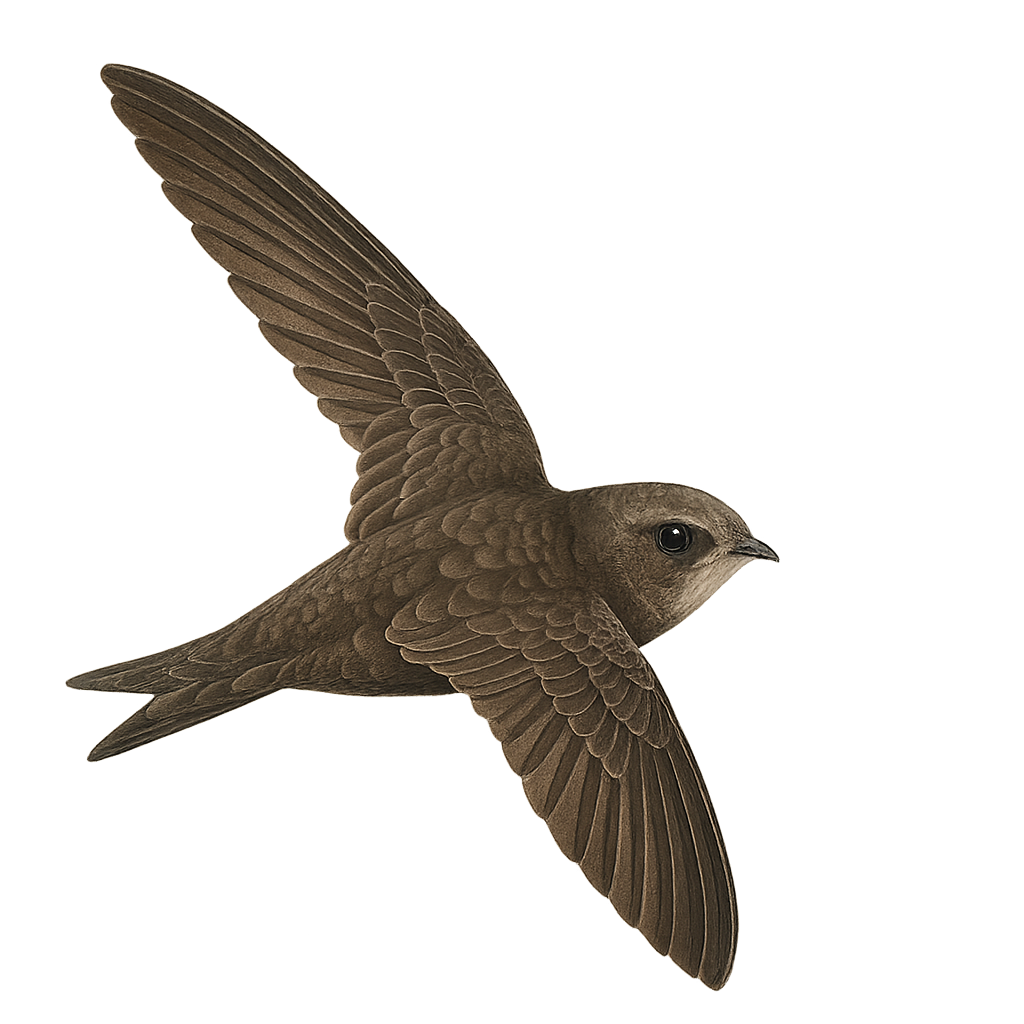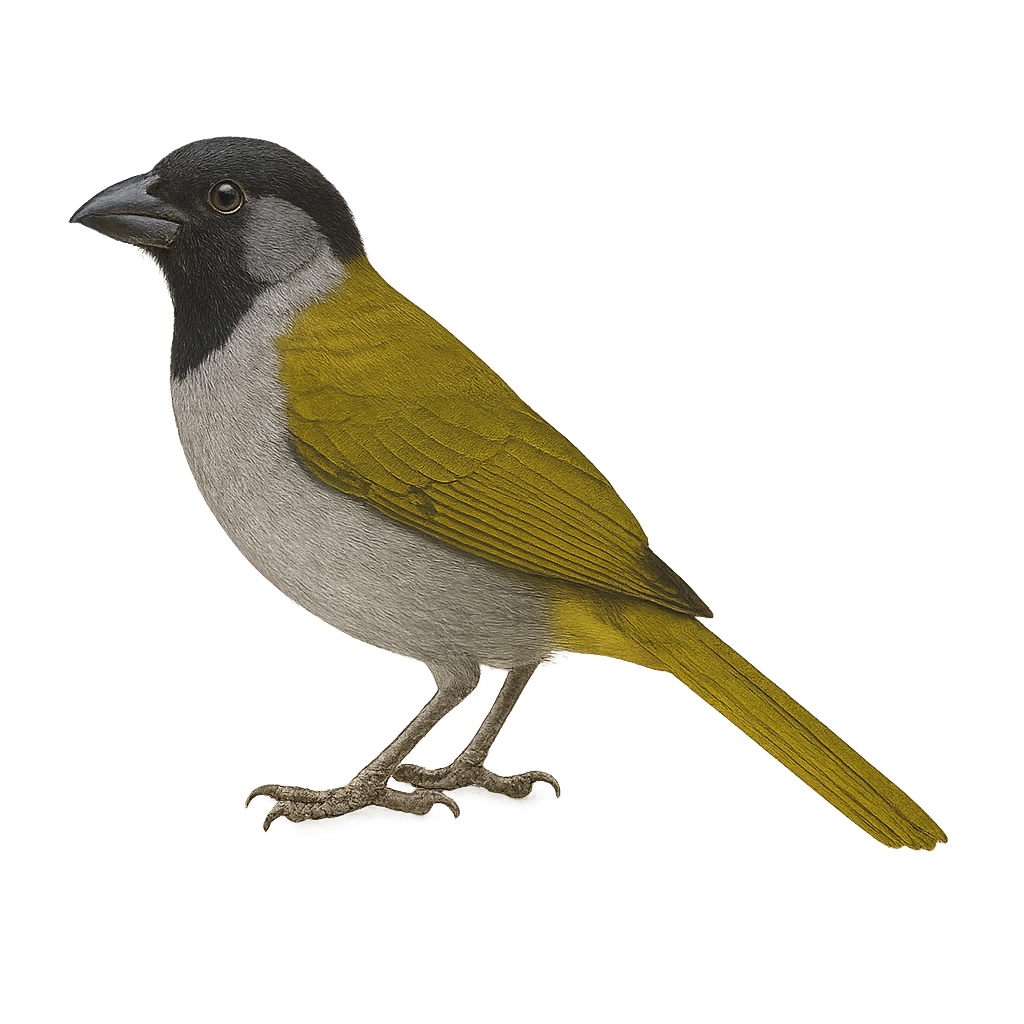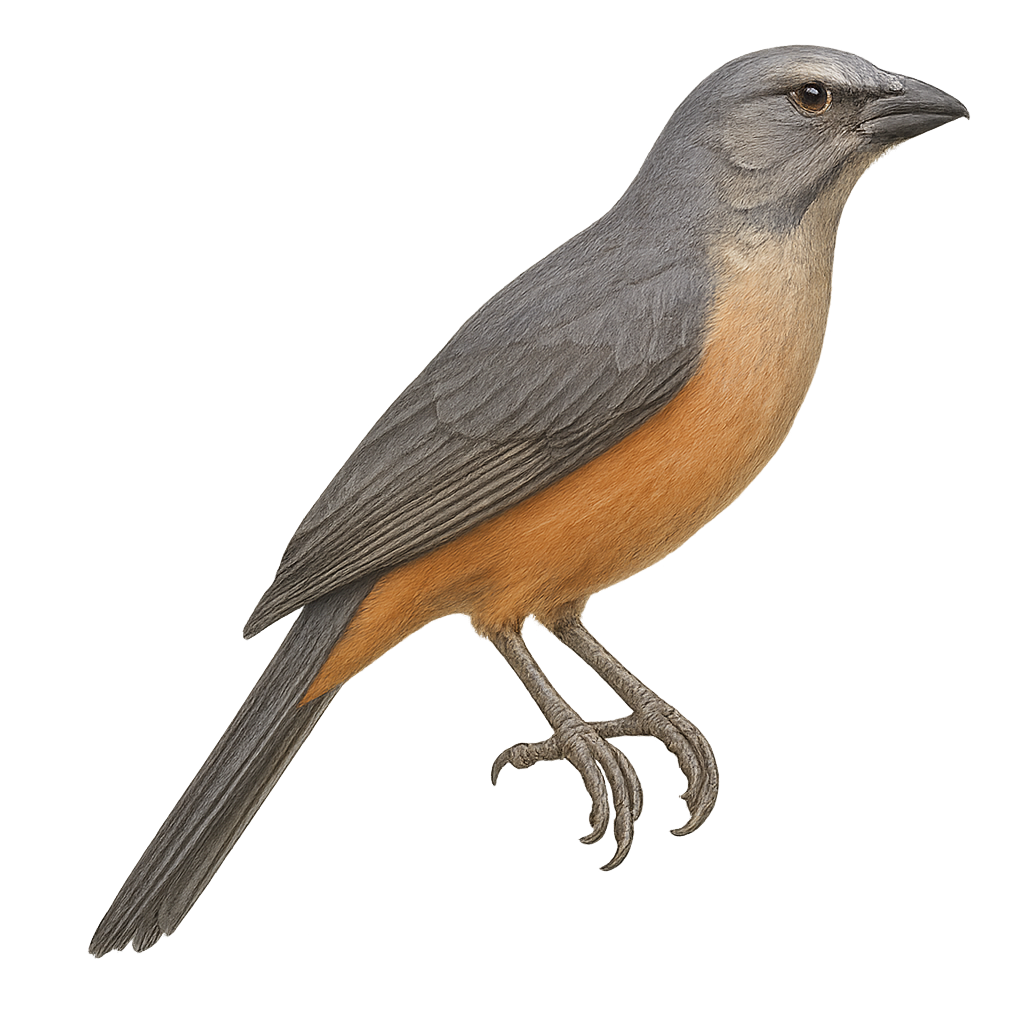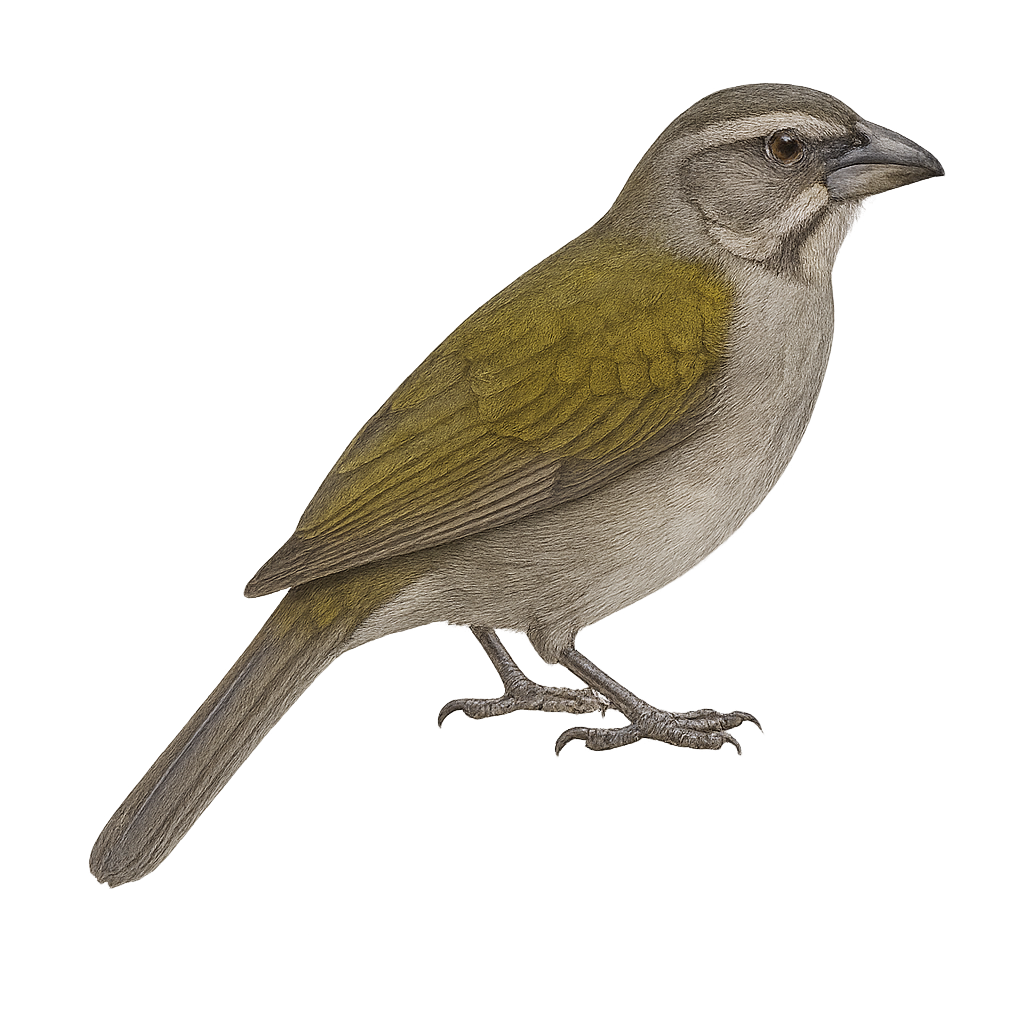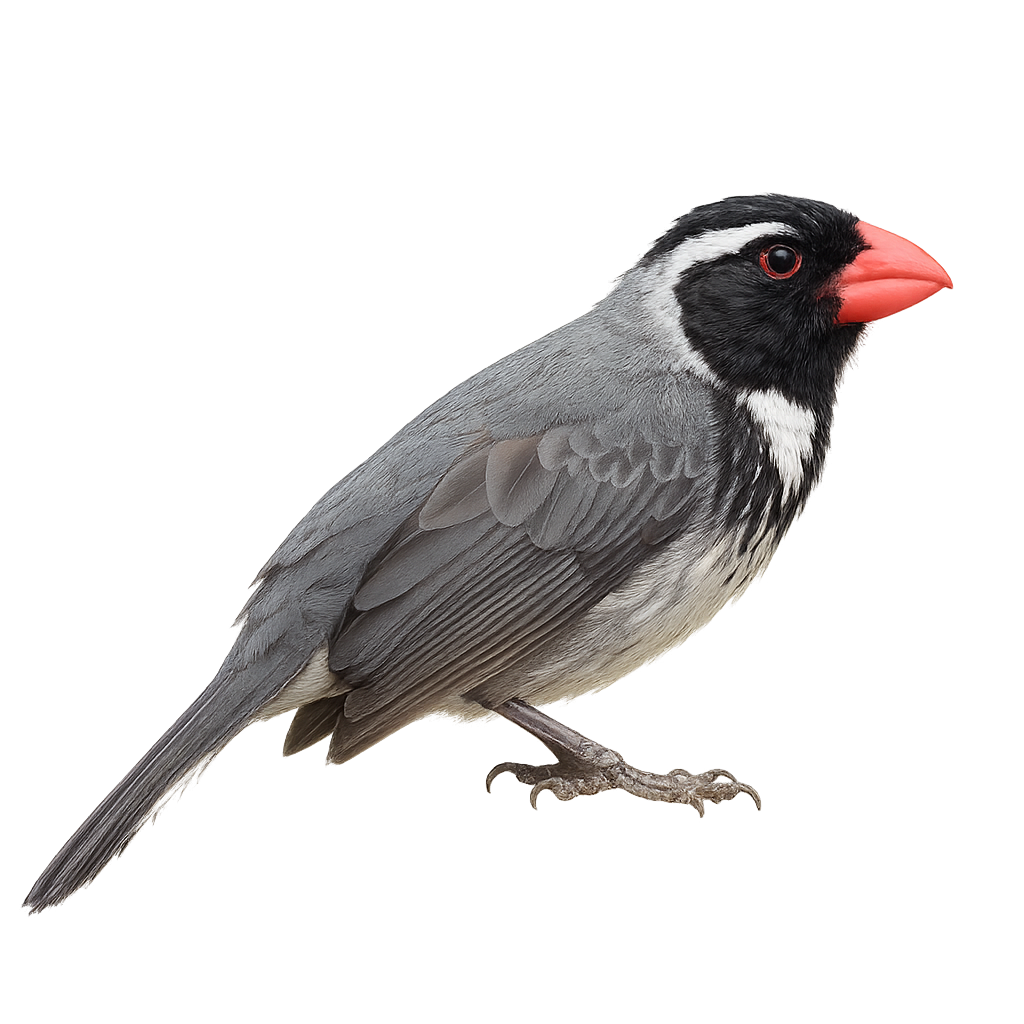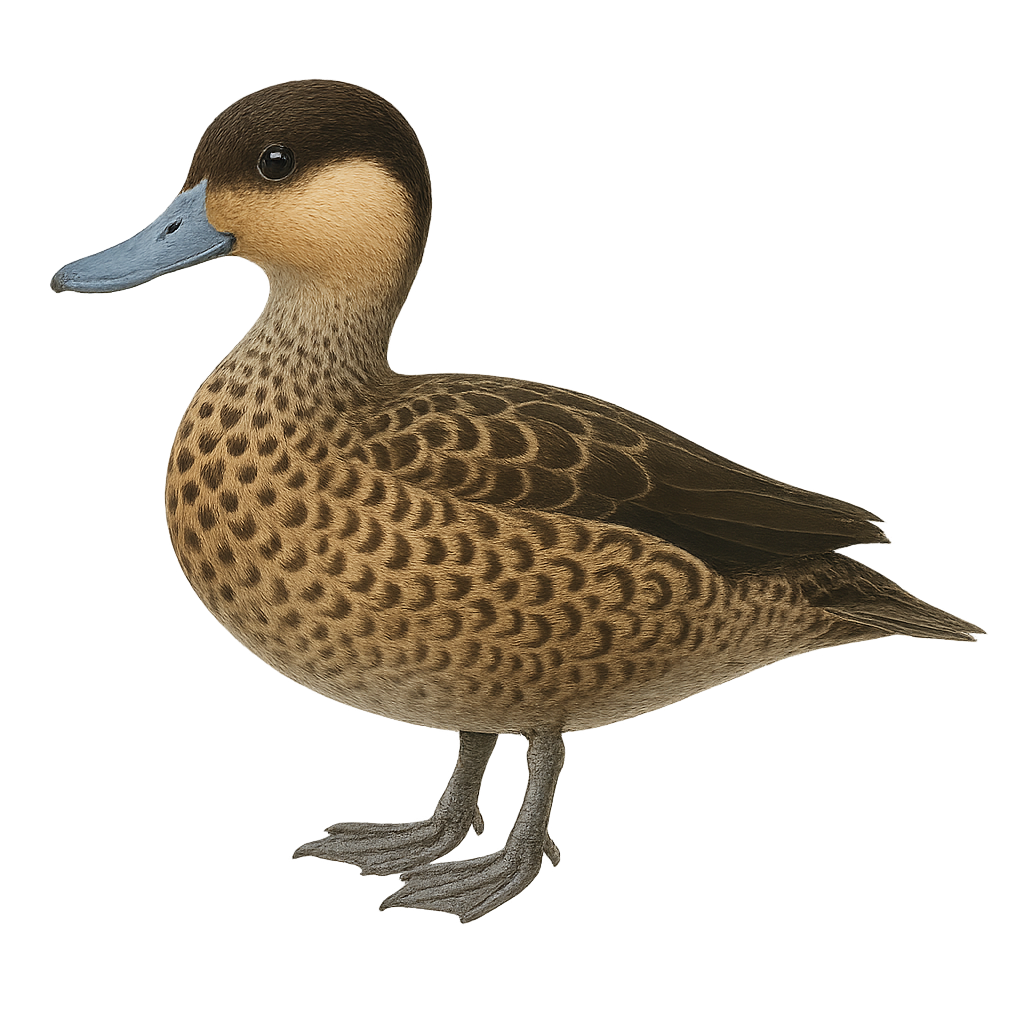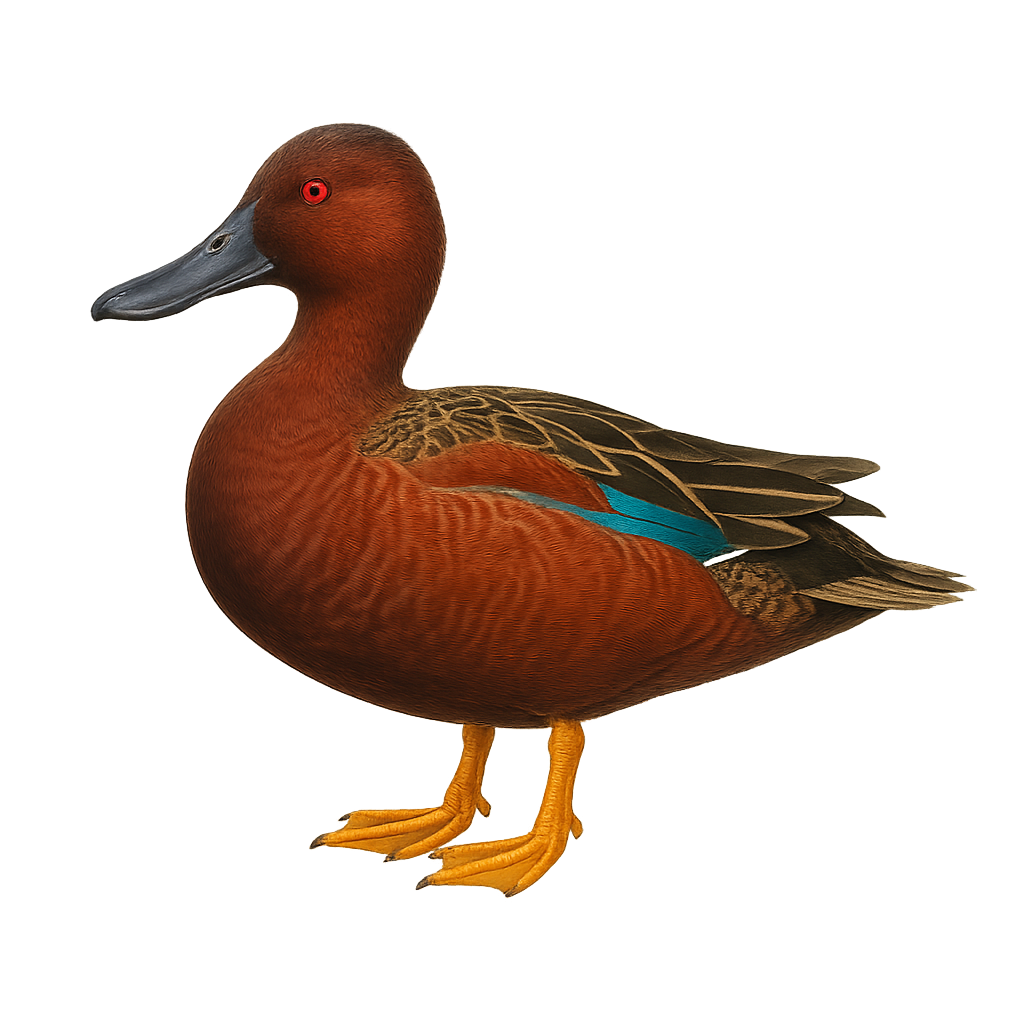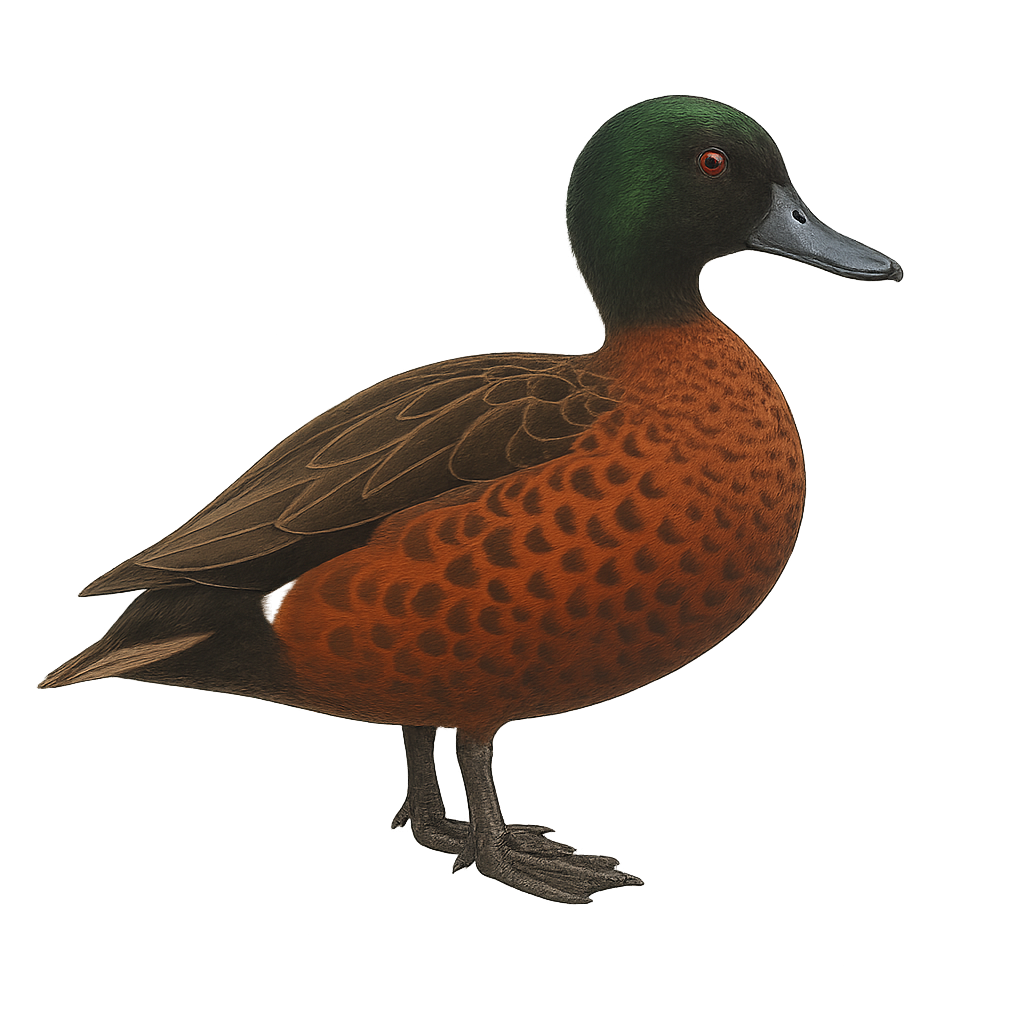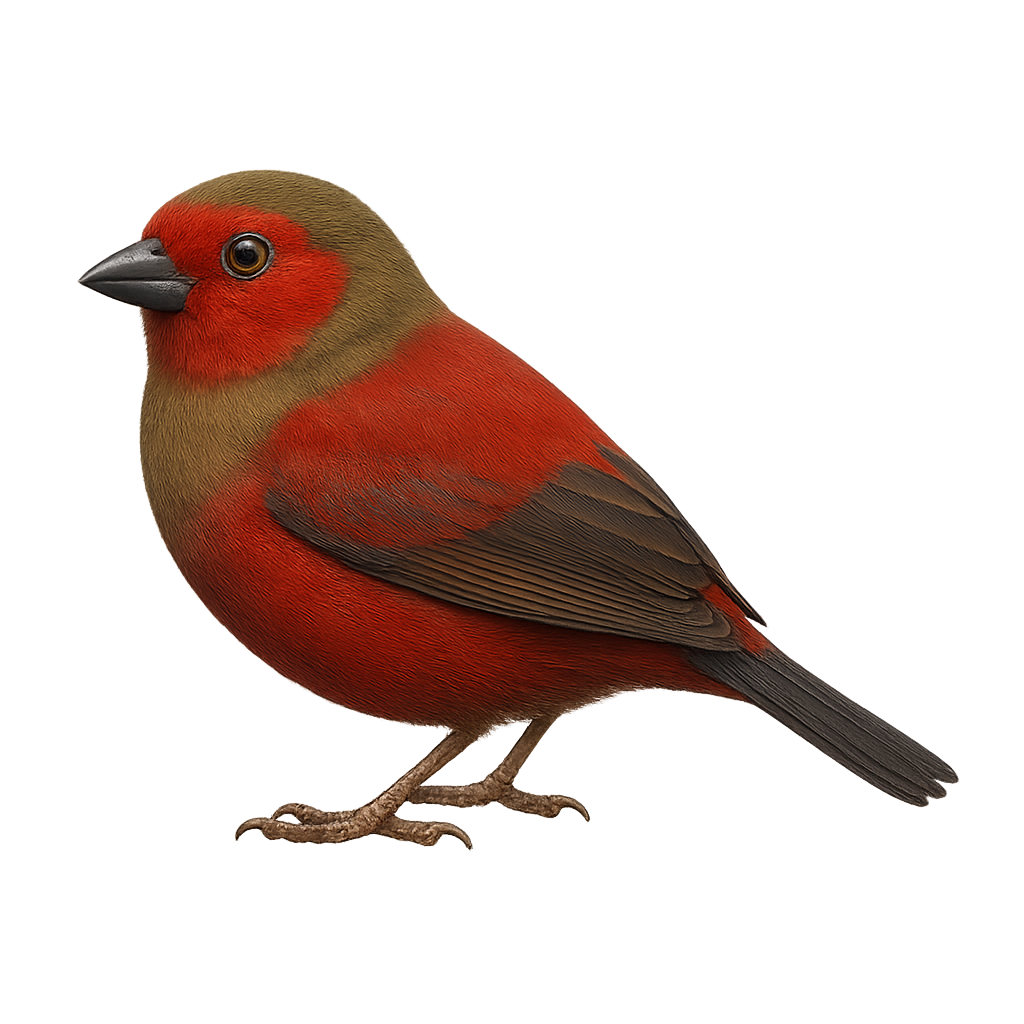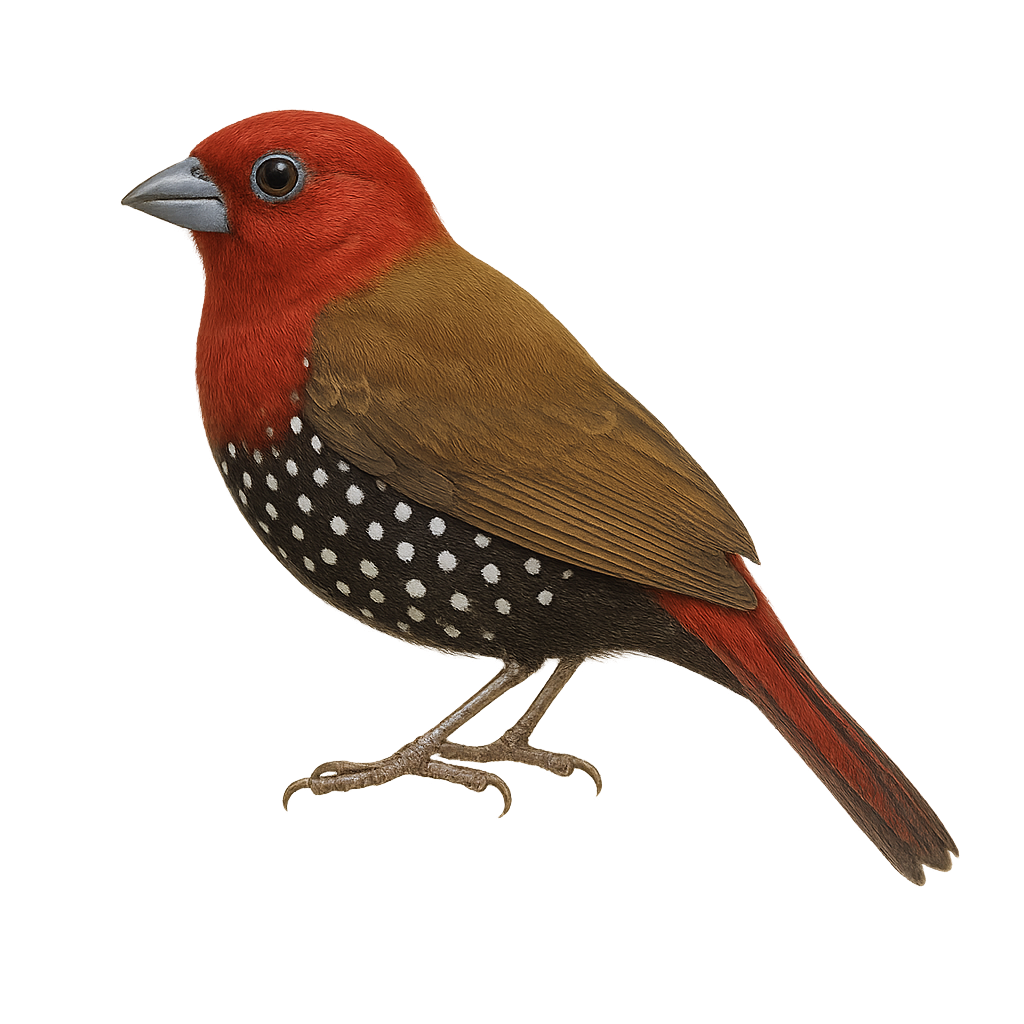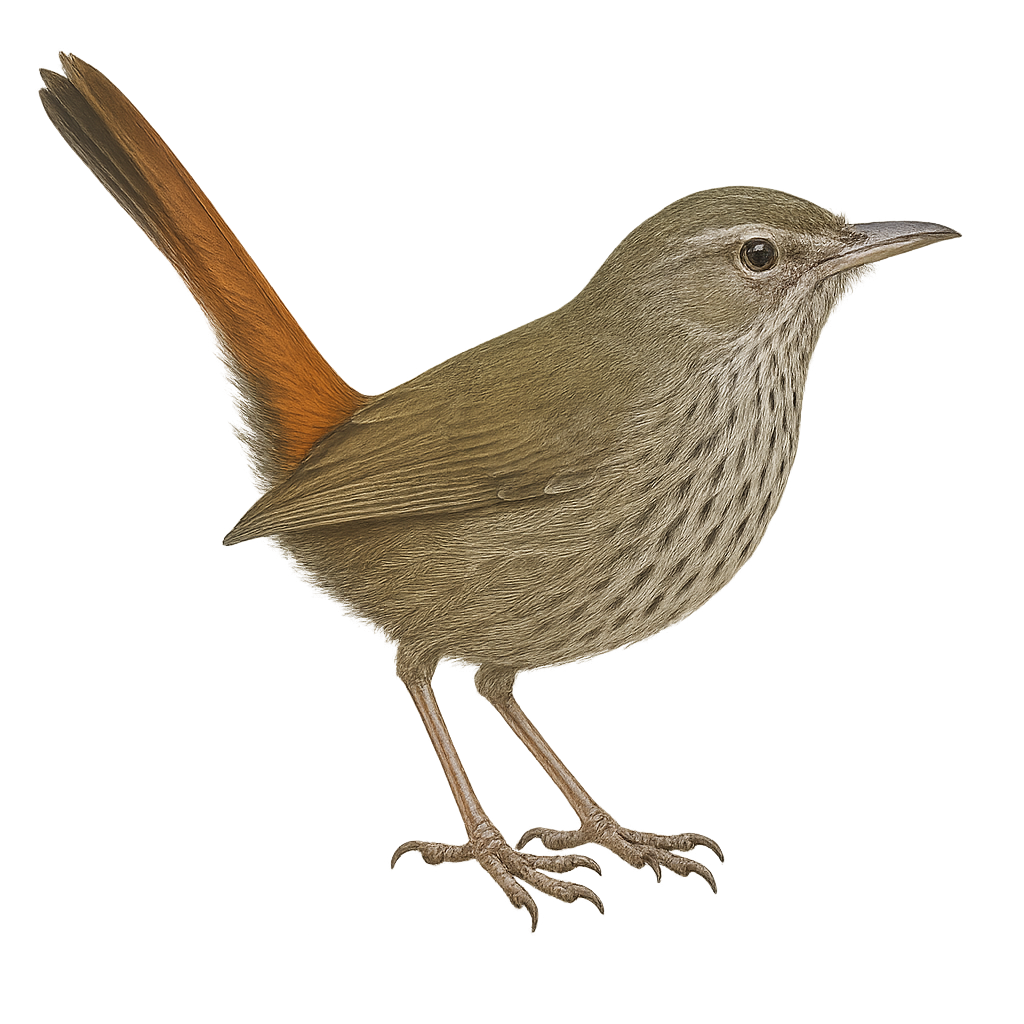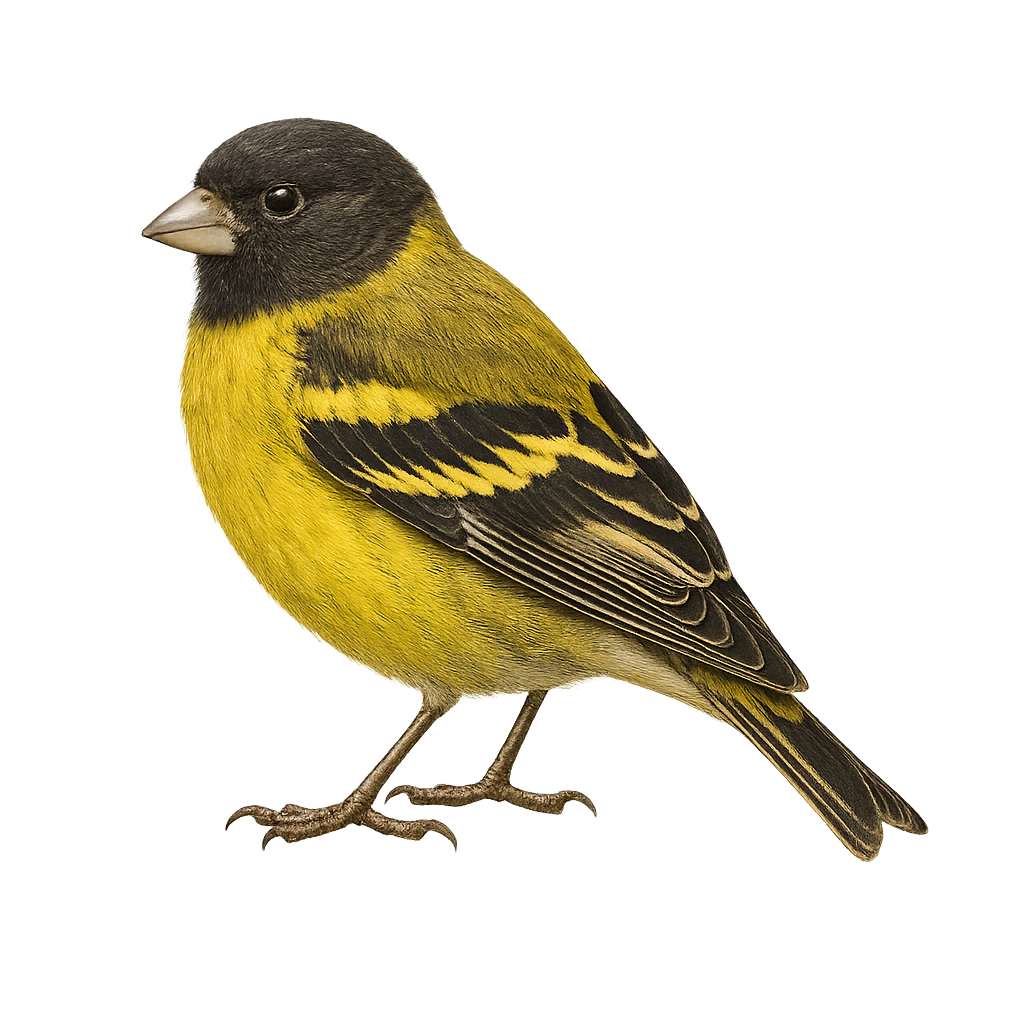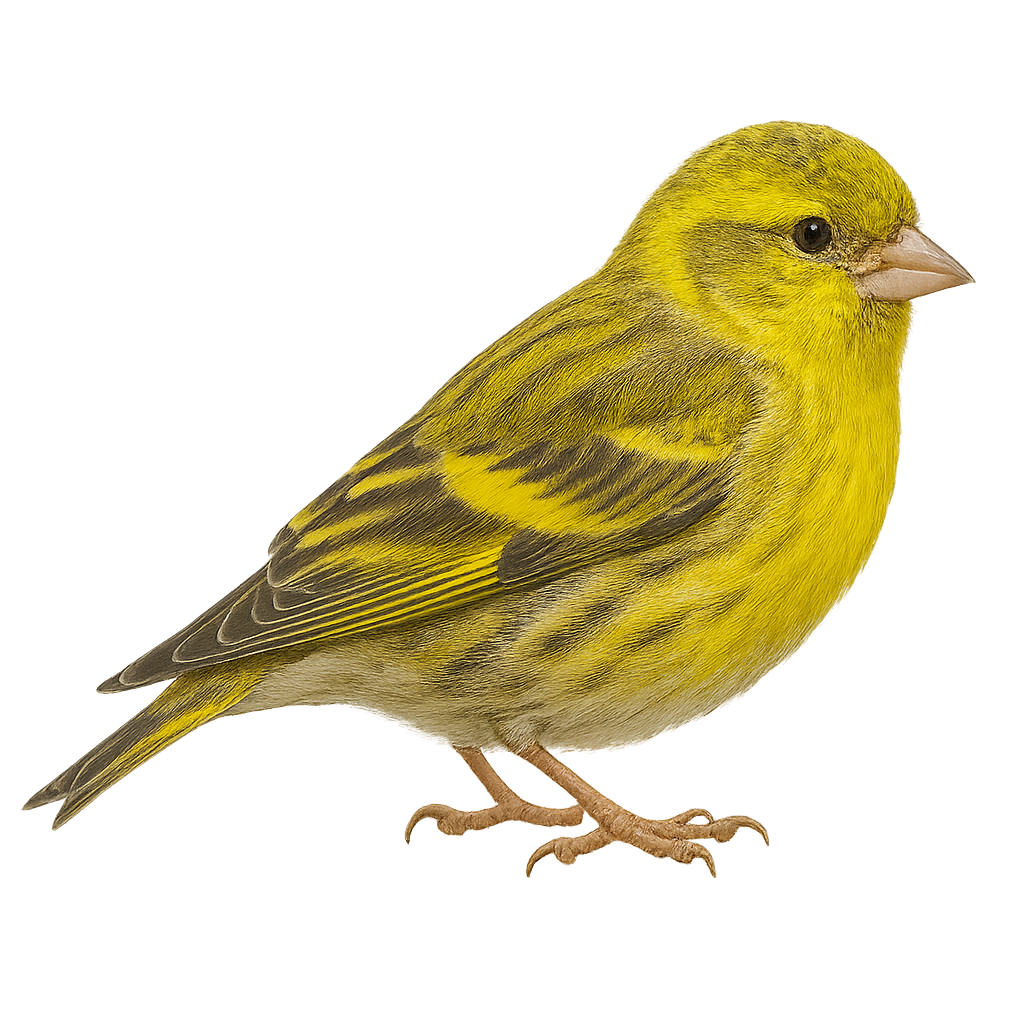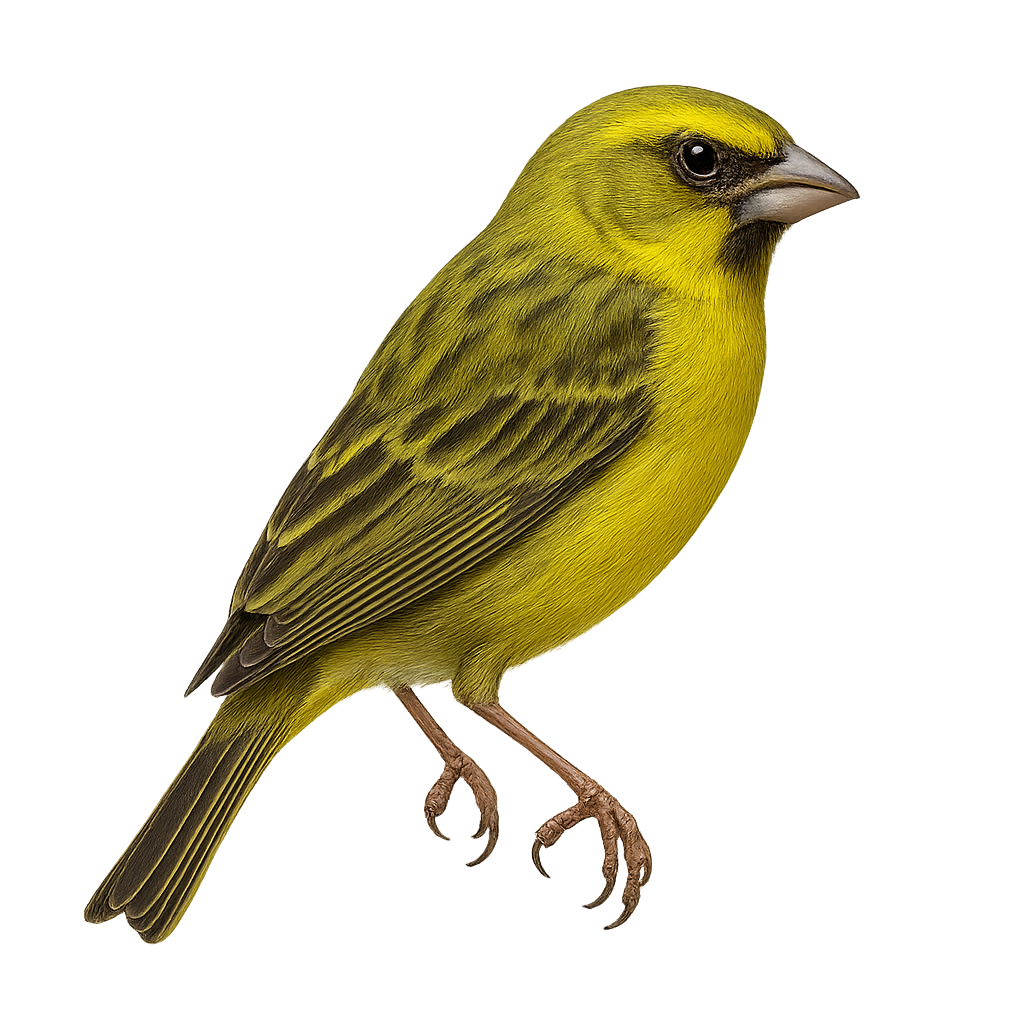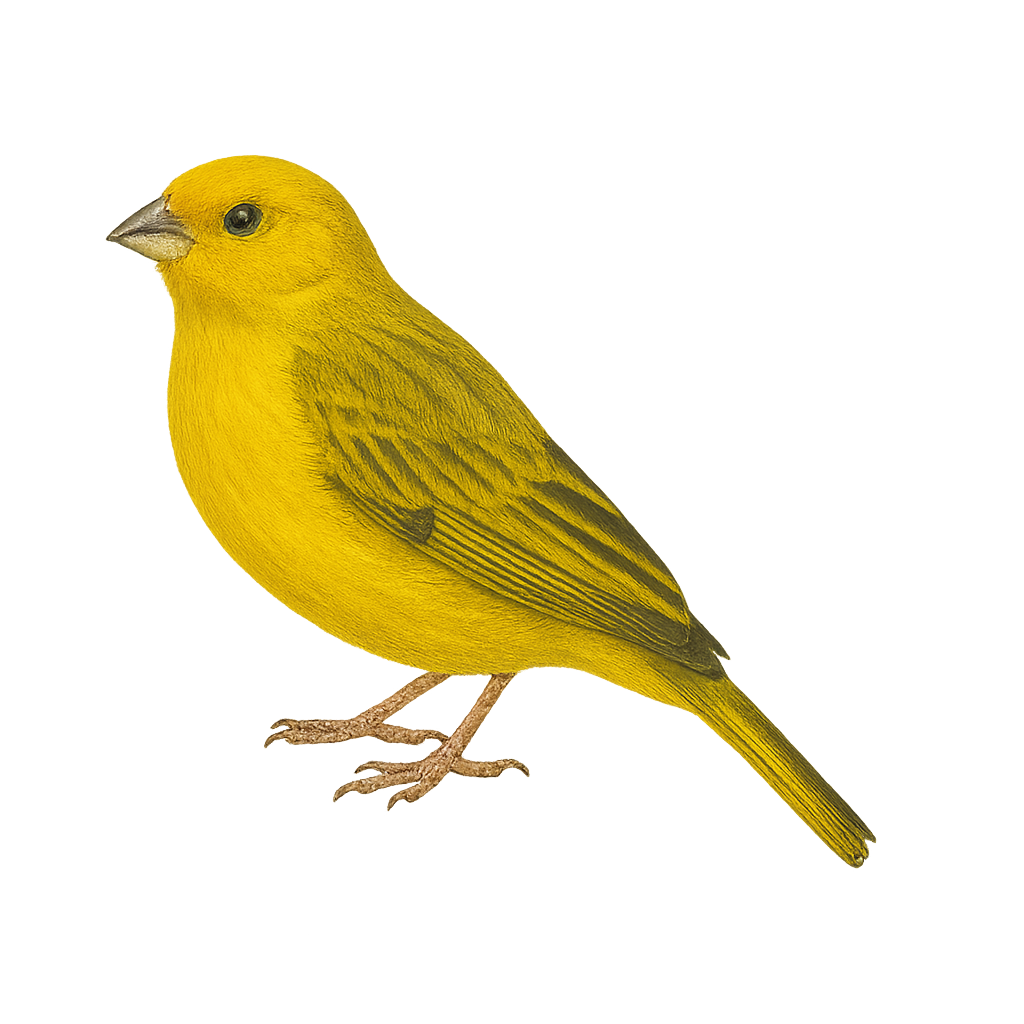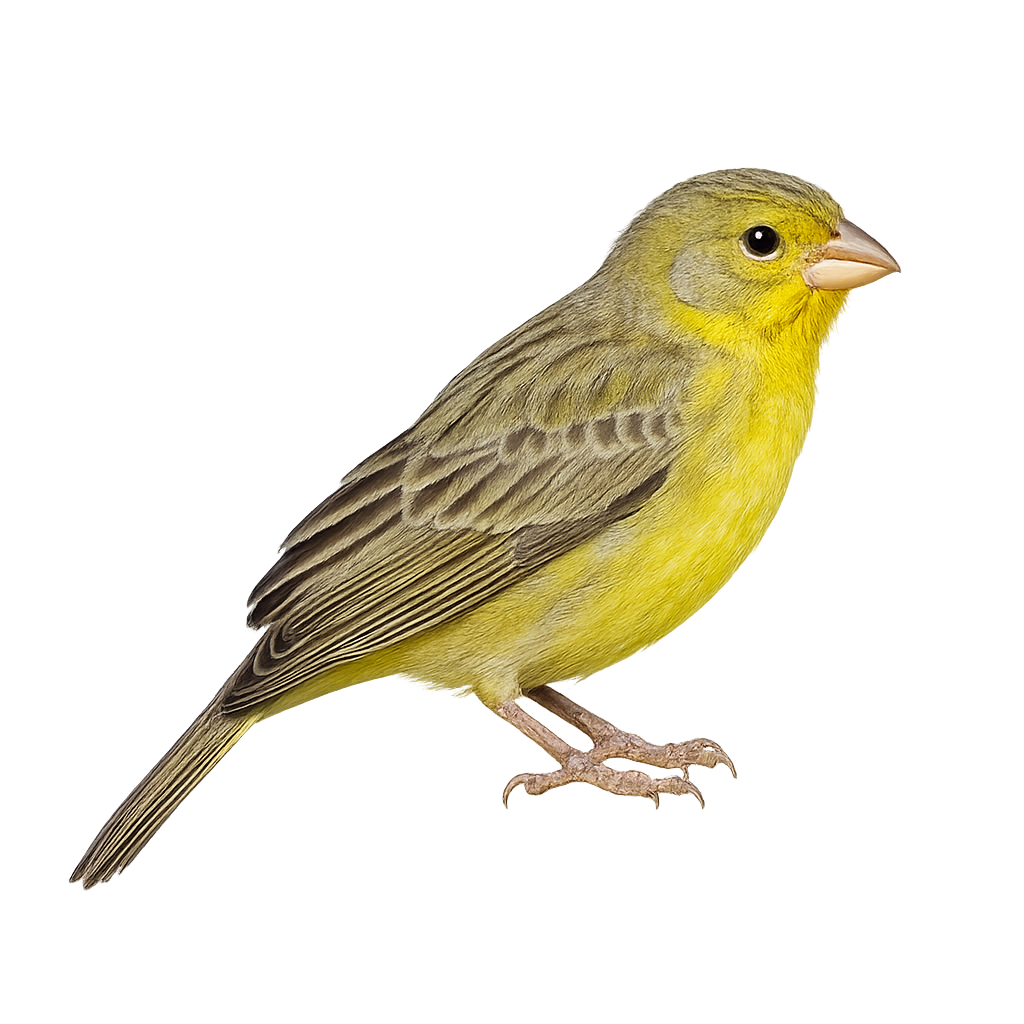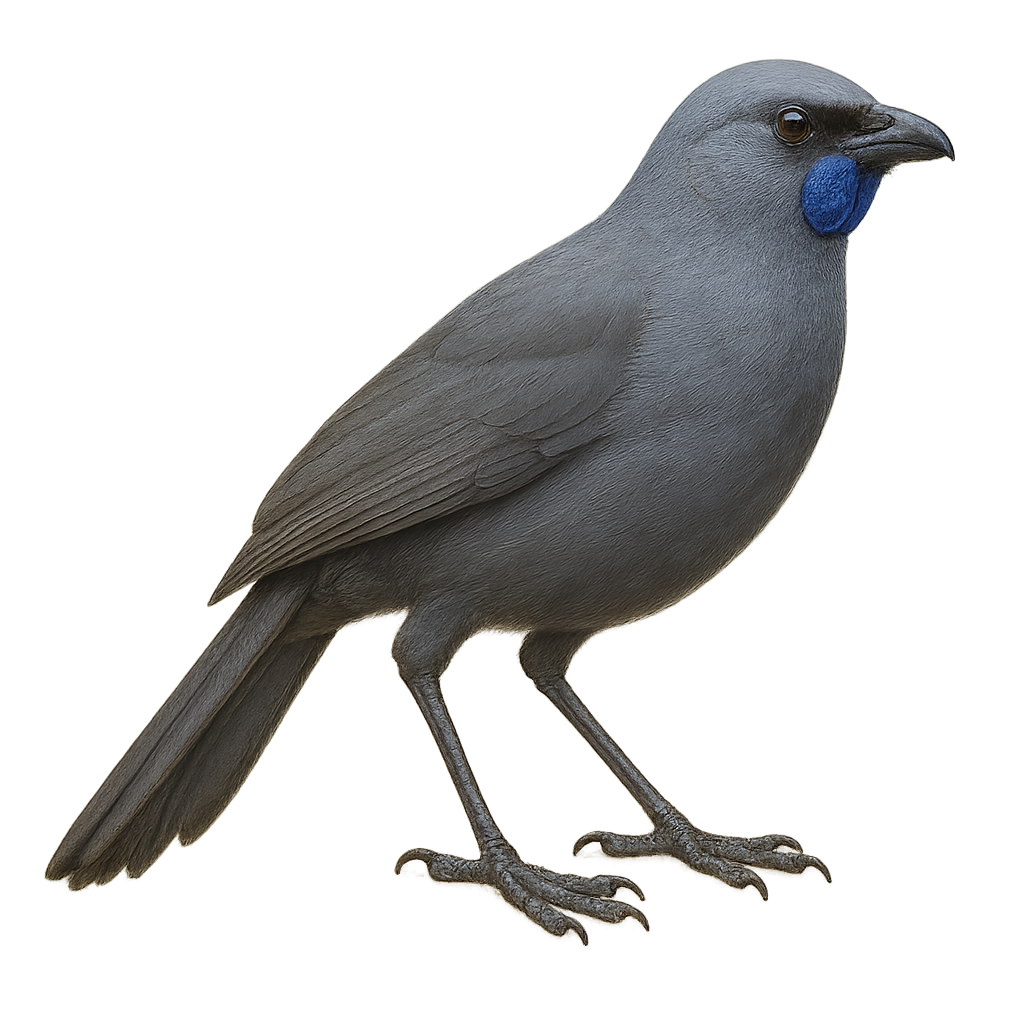The great reed warbler is an insectivorous passerine and the largest of the European reed warblers, measuring 18.5–20 cm in length with a 24–27 cm wingspan and weighing 25–38 g. It has unstreaked brown upperparts, buffish-white underparts and a pale supercilium. It inhabits dense reed beds, marshes and waterside vegetation, feeding mainly on insects, spiders and small amphibians.
The Eurasian reed warbler is a small migratory passerine, 11–13 cm long, with olive-brown plumage and a repetitive, hiss-like song. It inhabits reed beds and freshwater marshes, feeding on insects and larvae. During the breeding season, the male sings from an exposed perch and the pair builds a vase-shaped woven nest within dense reed vegetation.
The Seychelles Swiftlet, or Collocalia elaphra, is a small bird endemic to the Seychelles islands. This member of the Apodidae family is characterized by its brownish-grey plumage and its ability to fly swiftly and agilely. It primarily feeds on insects caught in flight. Seychelles Swiftlets often nest in caves or cliffs, using their saliva to build nests. Their population is relatively stable, though confined to their insular habitat. These birds are particularly active during the day, often flying in groups. Their behavior is generally suspicious, making observation challenging for amateur ornithologists.
The Black-headed Saltator is a medium-sized bird, measuring about 20 to 25 cm in length. It is easily recognizable by its black cap contrasting with its olive-green back and white belly. Its robust beak is well-suited for its diet, which mainly consists of fruits, seeds, and insects. It is primarily found in tropical and subtropical forests but can also inhabit wooded areas and gardens. This bird is known for its melodious and powerful song, often heard at dawn and dusk. It is usually seen alone or in pairs but can also join mixed-species flocks.
The Grayish Saltator is a medium-sized bird, measuring about 20 to 23 cm in length. It is easily recognizable by its grayish-blue plumage, with a lighter chest and slightly darker wings. Its beak is robust and adapted to its diet, which mainly consists of fruits, seeds, and insects. It is primarily found in tropical and subtropical forests, as well as open wooded areas in Central and South America. The Grayish Saltator is a social bird, often seen in small groups or pairs. It is known for its melodious song, which plays an important role in communication between individuals and territory defense.
The Streaked Saltator, scientifically known as Saltator albicollis, is a medium-sized bird belonging to the Thraupidae family. It is characterized by its olive-green back and white throat, which gives it its name. Its chest is gray with dark streaks, and it has a strong beak suited for its primarily seed-based diet. Found mainly in the tropical and subtropical forests of Central and South America, it is often seen in small groups. Although relatively discreet, its melodious song is easily recognizable. This bird plays an important role in seed dispersal, aiding in forest regeneration.
The Masked Saltator, or Saltator cinctus, is a medium-sized bird belonging to the Thraupidae family. It is primarily found in the humid forests and wooded areas of the Andes, where it is recognized by its olive-green plumage and lighter belly. Its head features a distinctive black mask that contrasts with its white throat. This bird is often seen in small groups or pairs, feeding on fruits, seeds, and insects. Although relatively discreet, its melodious and powerful song can be heard throughout the canopy. The Masked Saltator plays a crucial role in seed dispersal, aiding in forest regeneration.
The Green-winged Saltator is a medium-sized bird primarily found in the forests and wooded areas of South America. It is easily recognizable by its olive-green plumage and slightly darker wings. Its robust beak is adapted for cracking seeds, although it also feeds on fruits and insects. The song of the Green-winged Saltator is melodious, often heard at dawn. This bird is generally solitary or seen in small groups. It is quite suspicious of humans, which can make observing it a challenge. Its ability to adapt to different habitats allows it to thrive in various environments.
The Many-colored Chaco Finch is a captivating bird native to the dry and semi-arid regions of South America. It is easily recognizable by its vibrant and multicolored plumage, which gives it a unique appearance among passerines. This bird measures about 18 cm in length and features a combination of colors ranging from bright yellow to deep black, with touches of white and gray. It is often seen in small groups, feeding primarily on seeds and insects. The Many-colored Chaco Finch is a resilient bird, capable of adapting to various habitats, although it prefers bushy areas and open savannas. Its ability to blend into its environment while displaying striking plumage makes it a favorite subject for ornithologists and wildlife photographers.
The Hottentot Teal, or Spatula hottentota, is a small dabbling duck found mainly in sub-Saharan Africa. It is characterized by its light brown plumage, wings with greenish sheen, and blue-grey bill. Males and females are similar, although males often have slightly brighter colors. This duck prefers wetlands, such as marshes, lakes, and rivers with dense vegetation. It is primarily herbivorous, feeding on seeds, aquatic plants, and insects. Although generally discreet, it can be seen in small groups, especially during the breeding season. Its call is a soft whistle, often heard at dusk.
The Cinnamon Teal, or Spatula cyanoptera, is a small dabbling duck found primarily in North and South America. It is recognizable by its reddish-brown plumage in males, while females display more subdued shades of brown and gray. This species prefers wetland areas such as marshes and ponds where it feeds mainly on aquatic plants, seeds, and insects. The Cinnamon Teal is a migratory species, moving south during the winter months. It is often seen in small groups and is known for its fast and direct flight.
Anas crecca is the smallest dabbling duck in Eurasia, measuring between 33 and 38 cm in length with a wingspan of 53 to 58 cm. The male in breeding plumage is distinguished by a chestnut head with an iridescent green band from the eye to the nape, a white collar, and a body finely vermiculated grey. The female is brown speckled, with a light line at the eye and a light spot on the rump. It frequents shallow wetlands such as marshes, ponds, rice fields, and mudflats, often with dense aquatic vegetation. It primarily feeds on seeds of aquatic plants, algae, small invertebrates, and insect larvae. Reproduction occurs between May and July, with the female building a well-hidden nest in vegetation, where she lays 8 to 11 eggs. Incubation lasts about 21 to 23 days. A migratory species, it winters in Europe, Asia, and North Africa.
The Garganey is a small dabbling duck measuring between 37 and 41 cm in length with a wingspan of 59 to 67 cm. The breeding male is characterized by a broad white crescent over a reddish-brown head, finely vermiculated gray flanks, and gray-blue scapulars. The female has a cryptic brown-beige plumage with three longitudinal facial stripes. This species inhabits marshes, ponds, and floodplain meadows rich in aquatic vegetation, generally avoiding brackish waters. It feeds mainly on seeds, aquatic plants, mollusks, insects, and small crustaceans. Strictly migratory, it breeds in Europe and western Asia, wintering in sub-Saharan Africa, India, and Southeast Asia. Although listed as Least Concern by the IUCN, it is locally vulnerable due to the loss of wetland habitats.
The Chestnut Teal, Anas castanea, is a dabbling duck species native to Australia. This duck exhibits marked sexual dimorphism: the male has a metallic green head and chestnut breast, while the female is duller with brown and grey hues. They primarily inhabit wetlands, estuaries, and coastal marshes. Their diet consists of aquatic plants, insects, and small invertebrates. They are often seen in small groups and are known for their relatively tolerant behavior towards humans. The breeding season varies by region but generally occurs in spring and summer.
The Boat-billed Heron, or Cochlearius cochlearius, is a fascinating bird from the Ardeidae family. It is distinguished by its broad, spoon-shaped bill, ideal for capturing aquatic prey. This nocturnal heron primarily inhabits mangroves, swamps, and tropical rainforests in Central and South America. Its plumage is mainly gray with a black head adorned with a distinctive white crest. It measures about 50 cm in length with a wingspan of 76 to 86 cm. The Boat-billed Heron is a discreet bird, often difficult to observe due to its nocturnal habits. It feeds mainly on fish, crustaceans, and aquatic insects.
The Brown-winged Schiffornis is a discreet and mysterious bird, often difficult to spot in its natural habitat. It is characterized by its olive-brown plumage, which allows it to blend seamlessly into the dense undergrowth of tropical forests. This bird is primarily insectivorous, feeding on various insects and spiders it captures in the foliage. It is also known for its melodious, albeit discreet, song that resonates through the canopy. The Brown-winged Schiffornis is a solitary bird, but it can sometimes be seen in small family groups. It plays an important role in the ecosystem by controlling insect populations and participating in seed dispersal.
The Reichenow's Crimsonwing, or Cryptospiza reichenovii, is a small bird belonging to the Estrildidae family. It is primarily found in the montane forests of Central and East Africa, particularly in Rwanda, Uganda, and Burundi. This bird is notable for its bright red plumage in males, while females display more subdued shades of brown and red. The Reichenow's Crimsonwing is a discreet bird, often observed in small groups or pairs. It feeds mainly on seeds and insects, which it finds in leaf litter or on low branches. Although its habitat is relatively stable, deforestation poses a potential threat to its populations.
The Pink-throated Twinspot is a small bird with distinctive plumage, primarily brown with characteristic white spots on its flanks. The male has a pink throat, while the female displays more subdued colors. This bird is endemic to East Africa, where it inhabits savannas, open forests, and shrublands. It feeds mainly on seeds but also consumes insects. Its song is soft and melodious, often heard at dawn and dusk. Although discreet, it is sometimes observed in small groups, especially outside the breeding season. The species is currently considered of least concern by the IUCN but is sensitive to habitat degradation.
The Green-backed Twinspot, Mandingoa nitidula, is a small exotic bird belonging to the Estrildidae family. Native to the tropical forests of Central and East Africa, this bird is particularly admired for its bright plumage and distinctive patterns. Males display a bright green head, contrasting with a body speckled with white spots on a black background. Females, on the other hand, have more subdued colors, predominantly olive green. These birds measure about 10 cm in length and weigh between 9 and 12 grams. They are often seen in small groups, feeding mainly on seeds and insects. Their melodious song and social behavior make them fascinating subjects of study for ornithologists and bird enthusiasts.
The Chestnut-rumped Heathwren is a small bird endemic to Australia, primarily found in wooded areas and heathlands. Its modest size and discreet plumage, dominated by brown tones and a distinctive chestnut rump, make it difficult to spot in its natural habitat. This bird is known for its melodious and complex song, often heard before being seen. It primarily feeds on insects and small invertebrates, which it finds by foraging on the ground and leaf litter. The Chestnut-rumped Heathwren is a sedentary bird, rarely observed outside its usual territory. Although its conservation status is currently stable, habitat destruction poses a potential threat to its population.
The White-rumped Seedeater is a small granivorous bird found mainly in sub-Saharan Africa. It is recognizable by its brown-grey plumage with a distinctive white rump, which gives it its name. Measuring about 12 cm in length, this bird prefers dry savannas and open shrublands. It primarily feeds on seeds but can also consume insects. The White-rumped Seedeater is often observed in small groups, especially outside the breeding season. Although not considered threatened, its habitat is sometimes affected by agricultural expansion.
The Black-headed Canary, or Serinus nigriceps, is a small seed-eating bird belonging to the Fringillidae family. It is primarily found in the arid and semi-arid regions of southwestern Africa, particularly in Namibia and South Africa. This canary is easily recognizable by its black head contrasting with its bright yellow body. It inhabits rocky areas, open savannas, and dry scrublands. Its song is melodious, consisting of trills and warbles. The Black-headed Canary is a social bird, often seen in small groups. It mainly feeds on seeds but may occasionally consume insects.
The European serin is a small passerine bird found primarily in gardens, orchards, and urban areas across Europe and the Middle East. It is distinguished by its bright yellow plumage, dark wings, and small size. This small bird primarily feeds on seeds, which it finds in trees, bushes, and grasses. It is also known for its high-pitched, melodious song, which it performs during the breeding season.
The African Citril, or Crithagra citrinelloides, is a small songbird belonging to the Fringillidae family. It is characterized by its bright yellow plumage, especially vivid on the forehead and chest, contrasting with darker wings and tail. This passerine is mainly found in East Africa, where it inhabits woodlands, savannas, and gardens. Its melodious song is often heard at dawn and dusk. The African Citril is a sociable bird, often seen in small groups. It primarily feeds on seeds but can also consume insects. Its adaptability to various habitats makes it a resilient species, although some populations may be affected by deforestation.
The Crested Serpent Eagle, scientifically known as Spilornis cheela, is a medium-sized raptor distinguished by its prominent crest and piercing eyes. It primarily inhabits the tropical and subtropical forests of South and Southeast Asia. Its dark brown plumage is speckled with white spots, and its broad wings allow it to soar gracefully. An opportunistic predator, it mainly feeds on snakes, but also preys on lizards and small mammals. Its sharp call often echoes through the forests it inhabits. Although its habitat is threatened by deforestation, it remains relatively common within its range.
The Oriental Magpie-Robin, or Copsychus saularis, is a medium-sized songbird known for its distinctive black and white plumage. The male features glossy black feathers on its back and head, while the belly and wings are white. The female, however, has more grayish tones. This bird is renowned for its melodious and varied song, often heard at dawn and dusk. Native to South and Southeast Asia, the Oriental Magpie-Robin inhabits various environments, from tropical forests to urban gardens. It primarily feeds on insects but can also consume fruits. Although generally solitary, it may be seen in small groups during the breeding season.
The Saffron Finch, or Sicalis flaveola, is a small bird with a striking bright yellow plumage, accented with olive-green shades on its wings and back. Native to South America, it is often found in savannas, agricultural areas, and urban gardens. This passerine is known for its melodious song and adaptability to various environments. Males display more vibrant colors than females, making them easily identifiable. Their diet mainly consists of seeds, but they also consume insects. The Saffron Finch is a sociable bird, often seen in small groups, especially outside the breeding season.
The Grassland Yellow-Finch, or Sicalis luteola, is a small passerine bird belonging to the Thraupidae family. It is primarily found in open and semi-open regions of South America, such as savannas, grasslands, and agricultural areas. This bird is notable for its bright yellow plumage, especially in males, while females display duller tones. The Grassland Yellow-Finch is a gregarious bird, often seen in flocks, particularly outside the breeding season. Its song is melodious and varied, making it popular among birdwatchers. Although common within its range, it is sensitive to environmental changes, especially habitat destruction.
The Callaeas wilsoni, commonly known as the North Island Kōkako, is an endemic bird of New Zealand. It is easily recognizable by its bluish-grey plumage and bright blue facial wattles. This forest bird is known for its melodious and complex song, often compared to a flute. It primarily inhabits the wet and dense forests of the North Island, where it feeds on fruits, insects, and leaves. Although its flight is weak, it is an excellent climber, using its strong legs to move between branches. Unfortunately, the North Island Kōkako is threatened by habitat loss and predation by introduced species, leading to a significant decline in its population.
The White-breasted Nuthatch is a small bird with distinctive plumage, featuring a bright white breast, blue-gray back, and black cap. It is often seen climbing down tree trunks headfirst in search of insects and seeds. Its call is a nasal "yank-yank," easily recognizable. It primarily inhabits deciduous and mixed forests in North America. Although generally solitary, it can be seen in small groups outside the breeding season. The White-breasted Nuthatch is a resilient bird, capable of adapting to various habitats, including urban parks and gardens.


